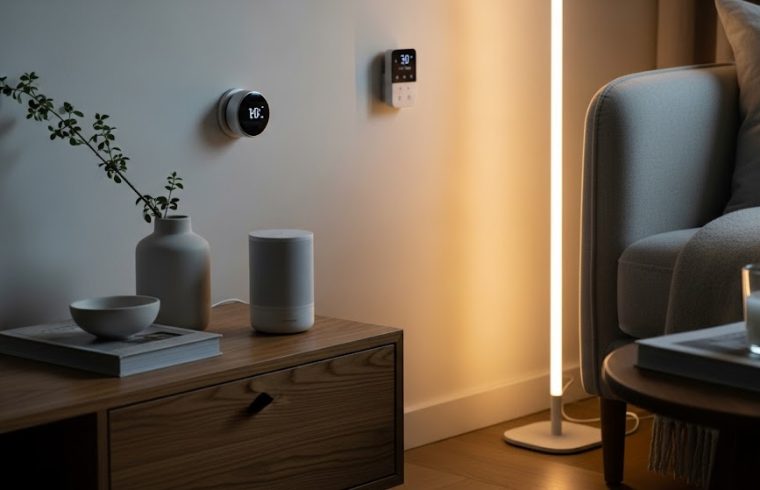For years, tech enthusiasts and sci-fi fans have buzzed about the metaverse – a virtual world where we’d interact, work, and play. While the metaverse continues to evolve, a quieter, yet arguably more pervasive, revolution is steadily gaining momentum: ambient computing. This isn’t about escaping into a digital realm; it’s about making our physical world smarter, more intuitive, and seamlessly responsive to our needs without us even having to ask.
What Exactly is Ambient Computing?
Imagine a world where technology fades into the background, working proactively and intelligently to enhance your environment and daily life. That’s the essence of ambient computing. Instead of interacting with devices (like tapping on a phone or typing on a keyboard), the environment itself becomes the interface. Devices communicate with each other, sense your presence, understand your habits, and anticipate your needs, providing assistance before you even realize you need it.
Think of it as the ultimate evolution of smart homes, expanding to smart cities and workplaces. It’s powered by an intricate web of sensors, AI, machine learning, and interconnected devices – often tiny and invisible – that collect data about your context, preferences, and intentions.
How Will Ambient Computing Manifest in Our Daily Lives?
Proactive Comfort
Your home might automatically adjust lighting, temperature, and even air quality based on your presence, time of day, and learned preferences, ensuring optimal comfort without you lifting a finger. If you’re coming home from a run, the smart thermostat might lower the temperature a few degrees in anticipation.
Effortless Productivity
In the office, meeting rooms could automatically configure themselves based on attendees, sharing relevant documents to screens, and adjusting AV settings for seamless presentations. Your wearable might sense your stress levels and suggest a brief, guided breathing exercise.
Intuitive Health & Wellness
Your bathroom mirror could provide a quick health scan in the morning, flagging subtle changes. Sensors in your bed might monitor sleep patterns and offer personalized recommendations for better rest.
Seamless Retail & Travel
Shopping could become more personalized, with digital displays adapting to your interests as you walk by. Airports might guide you efficiently to your gate based on real-time traffic and flight updates, minimizing stress.
The Pillars of Ambient Computing
This technological shift relies on several key advancements:
- Ubiquitous Sensors: Miniaturized, low-power sensors embedded everywhere – in walls, furniture, clothing, and everyday objects – constantly gather data.
- Advanced AI & Machine Learning: Sophisticated algorithms process this vast amount of contextual data, learn patterns, and make intelligent, predictive decisions.
- Edge Computing: Processing data closer to the source (on the device itself or nearby servers) reduces latency and enhances privacy.
- Interoperability: Devices from different manufacturers seamlessly communicate and work together, breaking down walled gardens.
Challenges and the Road Ahead
While promising, ambient computing raises significant questions about privacy, data security, and ethical AI use. Who owns this vast amount of personal contextual data? How do we ensure transparency and prevent misuse? These are critical considerations that developers and policymakers are actively addressing as this technology matures. To dive deeper into these discussions, you can explore more about the practical applications and ethical considerations of AI in our daily routines on Wired’s AI section.
Ultimately, ambient computing aims to make technology disappear, allowing us to focus more on living and less on managing devices. It promises a future where our environments are not just reactive but truly intelligent partners in our daily existence.
What aspects of a truly “smart” and “proactive” environment are you most excited (or cautious) about? Share your thoughts below!











